Garbage In, Garbage Out: Super Producer Butch Vig Digs Through Helix for Trash & Treasure
by James Rotondi
When the band Garbage first shot out of the cans in 1995, with edgy, ultra-modern singles like “Stupid Girl” and “I’m Only Happy When It Rains,” it was Scottish singer Shirley Manson, with her diabolic blend of defiance and allure, that captured the public’s attention. But the band was the brainchild of one of rock’s most acclaimed producers, Butch Vig, whose work with Nirvana, Smashing Pumpkins, and Sonic Youth helped define the new sound of the 1990s and beyond. Also featuring guitarists Duke Erikson and Steve Marker, Garbage would go on to sell more than 17 million albums.
Twenty-five years on, Vig remains both drummer and producer of Garbage, who are set to release No Gods, No Masters, their first album since 2016’s Strange Little Birds. Lead-off singles like “Wolves” and The Men Who Rule the World” show a band sticking to their crunchy creative compost: sound FX, potent machine-man grooves, and biting guitar tones from punchy, angular cleans to rafter-rattling fuzz. Vig’s right-hand-man in converting those scraps of sound into gold is Billy Bush, the notable mixer/engineer whose Red Razor Studios is where Garbage finishes and bags up stunning tracks like “Magnetized” and “Blackout.”
Whether they’re in Vig’s home-based studio, Red Razor’s buffed-out tracking space, or on the road, where they carry a good dozen Helix Racks and zero conventional amplifiers, Helix is critical to both men. Helix unlocks creative possibilities for guitar sounds—and even, often, drum parts and vocals—as well as enabling them to work quickly, efficiently, and economically. We checked in with both masterminds recently just as Garbage’s first new singles were about to drop, and the band were planning what they hoped would be their first live shows in a very long time.
Butch, thanks for chatting with us. I understand Helix has been playing a vital role in your writing and recording flow for the new Garbage record, your 5 Billion in Diamonds project, and more.
Well, put it this way, I’m sitting here in my home studio in Silverlake, called Grunge is Dead, and on the floor in front of me is the Helix Floor, like always. And I can just scroll through my presets here. Preset 1A is “Butch Vig Fender,” 1B is “Duke AC 30,” 1C is “Steve British.” Then I’ve got my “BV Small Amp,” then I have like, “SuperFuzz1,” “SuperFuzz2,” “Glitch Guitar.” The whole first bank is all my guitar presets, and I’ve also got about five or six bass presets. That’s all I’ve used lately. My studio is basically a glorified bedroom studio. I just deconstructed the bedroom and pushed the walls out a little bit.
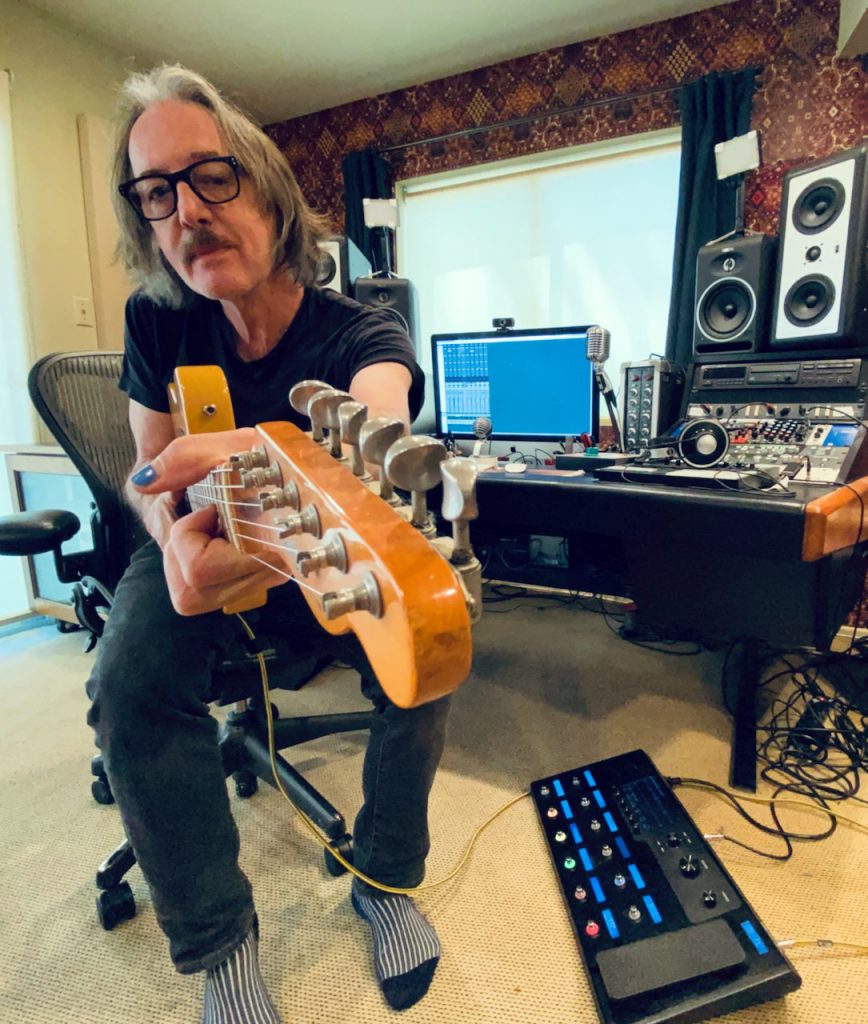
So, is that where you’ll typically record entire albums, or is it sort of the start-off and satellite studio?
Well, I’ve got a drum kit here, and a piano and a couple of real guitar amps. I’ve got a Matchless DC-30 out in the main room, but I barely ever use it because I’ve got the Helix right here and I can just instantly go boom, plug in, and go. While probably 80 percent of the guitars were recorded at Billy Bush’s studio, all the guitar stuff that I do here—and I do play some of the guitar myself—is done using the Helix. And like I said, I’ve got so many sounds dialed in, I know that if I want something specific I can get it really quickly. And to me, that’s paramount. I don’t really have the patience to fuss around getting a guitar tone for half a day like I used to. Now I want to get it in five minutes and go! [Laughs.]
You’re so celebrated for your production work. Does the Helix also play a role with other artists you produce?
Oh, sure. I used the Helix Floor extensively last year when I produced Silversun Pickups’ latest record Widow’s Weeds. We started the pre-production here at my studio, and Brian Aubert recorded a lot of the guitars here, strictly using the Helix. He found it really easy to get a great sound quickly and come up with a part inspired by that. Most of the tracking for the album was done at Billy’s, though, and we used his whole plethora of guitar amps and stompboxes, as well as Helix.
A lot of the overdubs were finished here at my place. And again, Brian just used my Helix Floor for all of the guitar tones. I keep telling him that he should use the Helix Rack for live, because it’s so easy to program. I think he uses an Axe-Fx III instead, and I’m not sure he completely knows how to program it! I keep saying, dude, it’s so easy to tweak the Helix presets, and it’s really easy to transfer them from the studio to your live show. I think he’ll eventually come around to Helix.
So, speak to me about using the Helix Rack units for Garbage’s live show. You guys have a pretty modern setup—very little of the traditional live drums and huge backline setup folks are used to.
One of the great things about using Helix Racks live is that they are very efficient—and we’re pretty stealth. Garbage can go on tour with very little equipment, relatively speaking. We never have to take a massive semi-trailer truck out with us to schlep our gear in anymore. And for me, the modeling in the Helix series has gotten so good that if you’re in a blind test, I swear a lot of people are not going to be able to hear the difference between a real amp and a well-crafted preset. Another great thing about Helix is that it’s all direct, which our front-of-house guy loves.
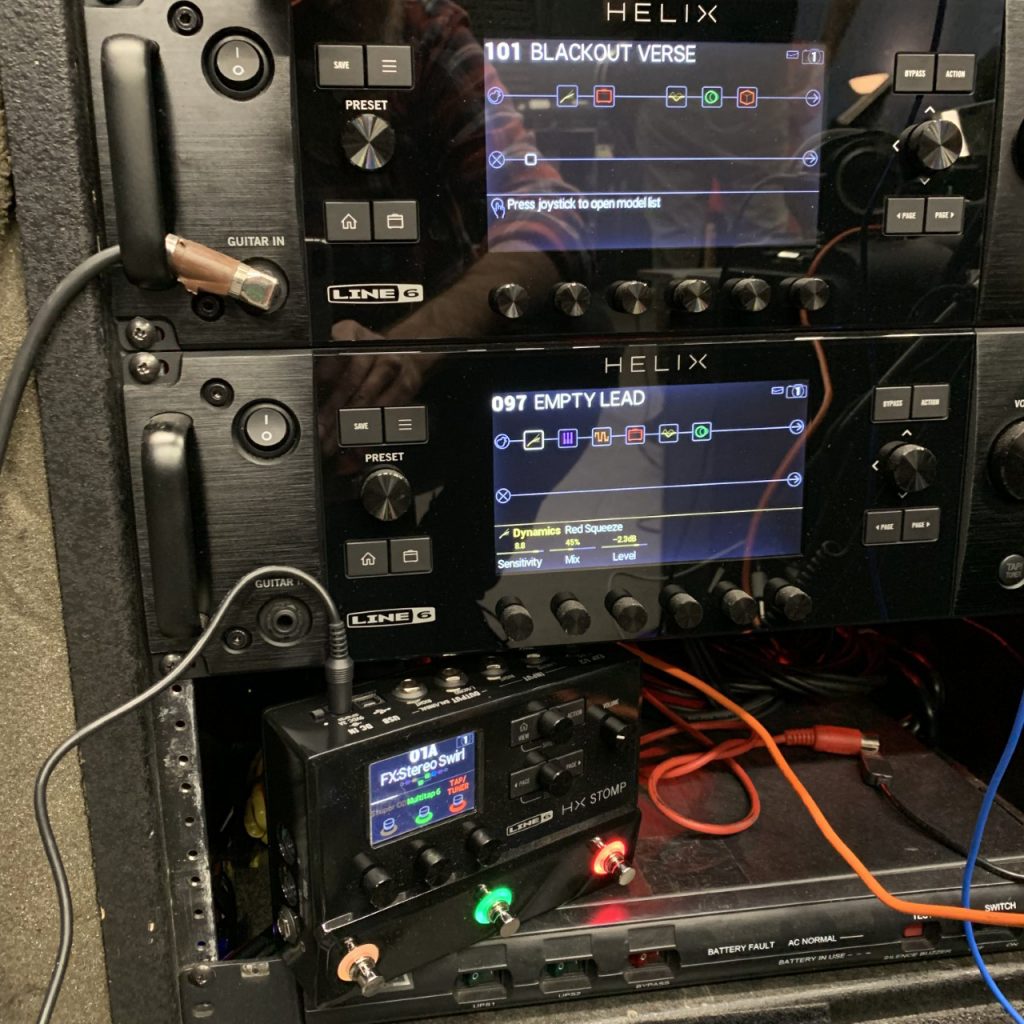
So, you’ve just finished a new Garbage album. What can you tell us about the album as a whole, especially as regards the guitar sounds?
There are a lot of different tones on this new album. It’s quite eclectic. It sounds like a mutant cousin to Beautiful Garbage, because each song is kind of its own thing. We didn’t get a global sound and then record all the songs around that for continuity. There are a lot of guitars on the record. I did a bunch of them here with the Helix and many don’t even sound like guitars. They sound like synths. Part of that is done inside Helix and part of it is done once I get everything into Pro Tools, where I’ll start tweaking it with the plug-ins and things. I use these Radial DI’s here, so I can route the sound out of Pro Tools and run it into physical stomp boxes and through Helix the same way I use my outboard rack gear. In fact, sometimes I’ll even use the Helix Wah on a drum loop to give it some character as it evolves over two or four bars—y’know, a little bit of a filter tweak to give it movement.
Which brings us to the many great pedals in the Helix. Tell me about some of your favorites.
I love the stompbox pedals inside Helix. There’s even a version of a pedal that we used to call “The Wringer” years ago with Garbage—that sound in Helix was based on our old BOSS FZ-2 Hyper Fuzz. It was all over the first and second Garbage records. It was absolutely one of our secret weapons, so Duke wrote the words “The Wringer” on it; like, you’d wring as much out of that fuzz as you could. That’s what The Wringer inside the Helix is based on, which is really cool. It’s a special kind of overdrive because there are two selectors for the frequencies that are really narrow where the boost is.
When there are a lot of guitars going on in a mix, I’ve always found it helpful to find real narrow frequency bands for each one, rather than giving any one guitar a tone with tons of top-end, bottom-end, and midrange. There’s already so much stuff going on in the mix, so you need to find very specific frequency pockets. That’s how a lot of my presets in Helix are crafted. Possible exceptions are the SuperFuzz sounds, which are just gigantic rhythm fuzz chord sounds. But all the lead-type sounds, for lines or parts, are really narrowly sculpted from an EQ point of view. They’re great for finding the available pockets in a dense mix.
While the huge fuzz walls are a Garbage signature, there are plenty of clean, compressed sounds, too.
Yeah, and for cleaner sounds, I do usually like to have a compressor first in line, say, with my “BV Fender” preset or the AC-30-style amps in Helix. I usually use the Red Squeeze up front, because I like to hear that pluck of the strings and how it talks to the compression—it’s definitely not about getting more gain, but more punch and character. Once I get the compression set, I’ll usually try to take the gain down, in fact, so it’s not noticeably louder, because sometimes you’ll be fooled into thinking it sounds better when it really just sounds louder. But with those clean sounds especially, I like how the Red Squeeze evens out the notes, and I like what it does to the attack of the guitar.
So, can you give me an example of a Helix tone recipe for one of super-producer Butch Vig’s more mammoth rhythm sounds?
Ha! Okay, this is a pretty simple sound: what I call the “SuperFuzz1.” It’s actually using the Scream 808 at the front end, then using the Angl Meteor amp, an EQ, and a Noise Gate. The cabinet is the 4×12 XXL V30. That’s for those powerful chunky rhythm sounds. It’s probably a little too messy to play lead stuff, unless it’s like a simple riff, but if you’re playing fast—and trust me, I can’t play fast—it’s probably not going to work for that. It’s more just for really giant chords.
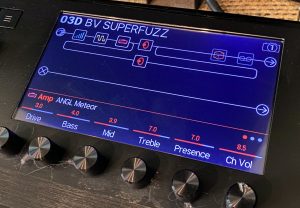
Do you take advantage of the stereo outputs for recording, or do you prefer mono captures?
I would say probably 80 percent of the time I record mono, and then I’ll usually double that part, so I’ll pan one left and then do another take and pan it right. To me, at least in the studio, being able to have a mono source and then pan it around where you want it to is probably better. A lot of the stereo for me comes from ambient effects plugins inside Pro Tools, like delays and reverbs and things that you can always add at the mix stage. But I will say that live, Duke and Steve use a mixture of mono and stereo patches on the Helix Rack. It’s really dependent on the part and the song. If it’s sort of a ringy clean part that’s got delays and reverbs, I think stereo is probably better, but in many of the songs the front-of-house guy is splitting Duke and Steve’s mono parts left and right, especially if they’re playing fairly similar parts.
Billy Bush obviously plays an important role in making the albums, but he’s a key part of the live team, too, right?
Absolutely. Billy’s in charge. He’s basically the production manager and the stage manager, and he’s the one directing the monitor guys and the front-of-house guys. Billy also sets up all the Helix Racks onstage, and he does all the programming for the live show. Duke and Steve will tweak their presets, but Billy’s the one who gets them edited and loaded and into the banks, and arranges them so they trigger at the right time in the song—he syncs the whole thing up in MIDI. Now, I’m the one who starts all the songs with an Ableton Live trigger from a pad. So, on most of the songs we use sequencers and there’s loops and percussion on there and sometimes there’s even backing pads. When I start a song, it presets my Roland TD-50 drum set to a very specific sound and it talks to all the Helix units, too. Billy does all that programming. He sets all that up. He’s the mad scientist . . . !
Vig’s Right-Hand-Man Billy Bush

“The way that Helix really shines for me,” offers Billy Bush, the engineer/mixer extraordinaire behind albums by Paul McCartney, Kaiser Chiefs, Silversun Pickups, and of course, Butch Vig’s savvy studio partner for decades with Garbage, “is the way it allows you to create sounds and signal paths that couldn’t possibly exist in a practical way on a real-life pedalboard. Like putting a pitch bend on the reverb, for example, or changing the tuning of the guitar from section to section of a song. Helix allows you to be as imaginative as you want to be, and it lets you get those results really quickly and efficiently.”
Bush’s buffed-out Red Razor Studios in Los Angeles is a guitar player’s idea factory, boasting a Helix Floor, Helix Native, Echo Farm, Amp Farm, and Pod Farm, and an elaborate multi-output guitar switching system. The chain starts by sending the guitar signal to an Audio Kitchen The Small Trees DI and into a Little Labs PCP Instrument Distro 3.0, a “transformer-isolated guitar splitter.” (He also sends a direct output from the Small Trees to Pro Tools for later re-amping with Helix Native.)
From the PCP Distro, that signal is split and distributed to a galaxy of amps and pedals, including a vintage Ampeg B-15 and Fender TV Bassman for bass; a Helix Floor to stereo DIs into Pro Tools; a Radial Splitter with outputs to a miked Matchless JJ-30, Diezel VH4, and other live amps; and two amps—an Audio Kitchen Big Chopper head and a MESA Dual Rectifier Maverick—that are input and attenuated to a Universal Audio OX Amp Top Box and sent direct to Pro Tools, as well.
The creative options don’t stop there. Bush is also the field officer in charge of Garbage’s live show, and that includes programming and wiring up Garbage’s total of eight Helix Rack units for live performance: the main one and the backup for the guitar players—Steve, Duke, and Shirley—and two, as well, for bassist Eric Avery. [See photo of Duke’s Helix rig.] “I actually think we have around 12 Helix Racks total,” laughs Bush. “And that’s because of extra backups and different touring setups. It sounds complicated, but it’s really not. I’ll explain.”
“I just need to do some pre-programming, making sure the right amps and effects are in each preset, and then the Snapshots are built around the different sections of each song, right? In fact, I do most of that programming in Helix Native—I love the interchangeability of Native and Rack—and my system is that every Rack unit is loaded with the exact same sounds that everyone uses, so they’re all interchangeable. Even if Steve, say, never uses Duke’s presets, they’re all loaded into all the units anyway. So it’s pretty easy to just do my programming in Helix Native, and then, as things change, fly in and update all the units with HX Edit: update, update, update—cool.”
Bush may be slightly under-selling the complexity of his approach; his Snapshots are widely variable, and he exploits lots of under-the-hood features than many players overlook. “Along with stuff like being able to use Snapshots to flip between different amps and pedals within one preset,” Bush explains, “I love being able to control multiple effects in multiple directions with the expression pedal. I don’t know that a lot of people really dig that deep into it, because it’s kind of a mind-warp. But the fact that with one pedal-down move, you can, say, turn up the amount of gain on the fuzz while you’re turning down the reverb, but you’re also turning up the feedback and the amount of delay at the same time—that’s a godsend.”
“I mean, there’s no other way to do that, because, well, no one has six feet!”
More about Helix: https://line6.com/helix/

Guitarist and writer James Rotondi has been a Senior Editor at Guitar Player and Guitar World, a contributor to Rolling Stone, JazzTimes, Acoustic Guitar, Mojo, and Spin, and has toured with the acclaimed bands Mr. Bungle, Humble Pie, and French electro-rock group Air. He lives in Nashville.
Related posts
By submitting your details you are giving Yamaha Guitar Group informed consent to send you a video series on the Line 6 HX Stomp. We will only send you relevant information. We will never sell your information to any third parties. You can, of course, unsubscribe at any time. View our full privacy policy

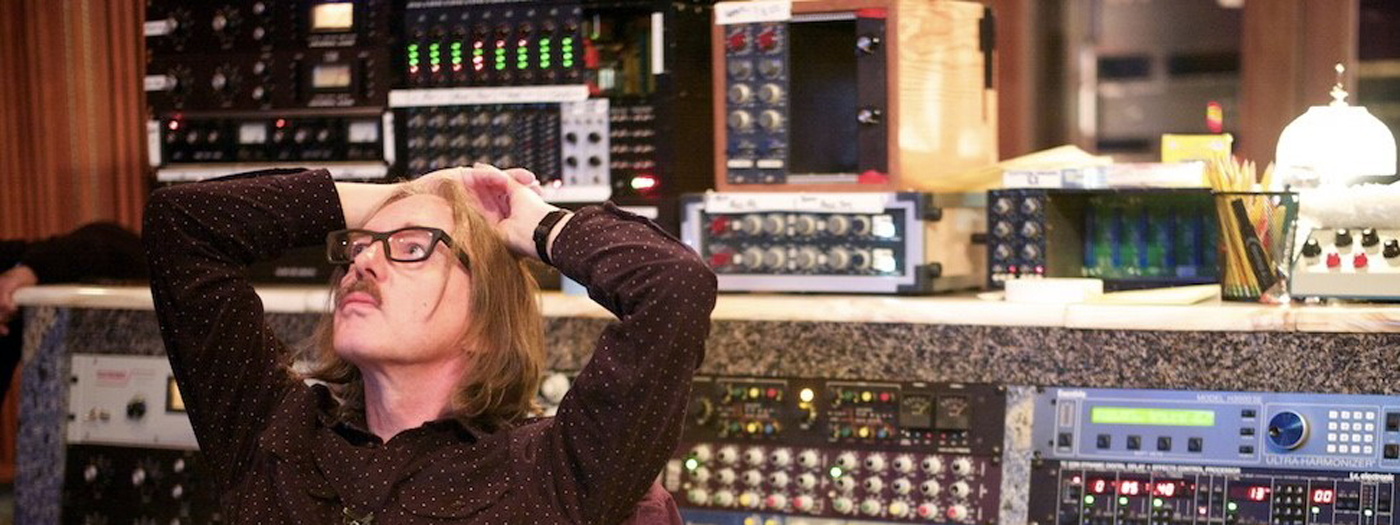
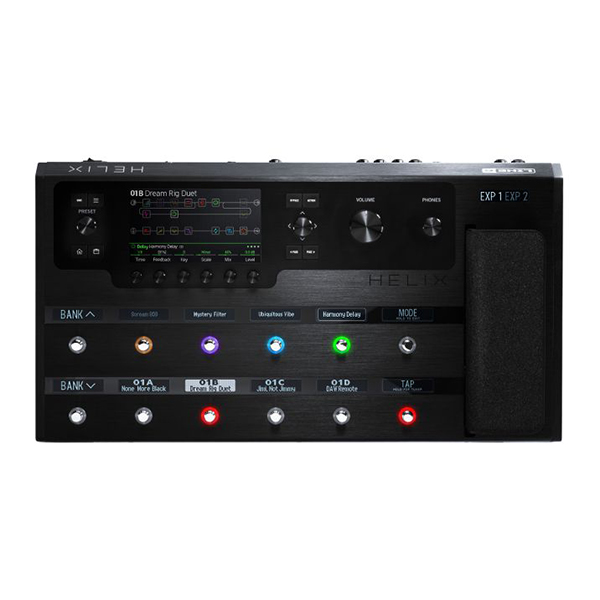
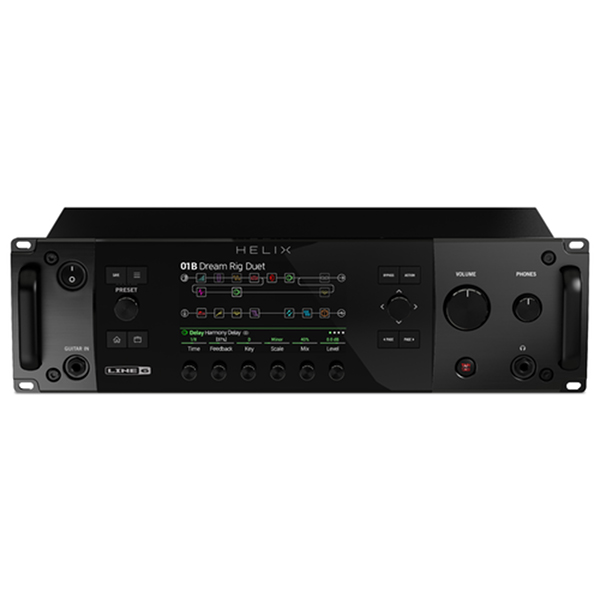
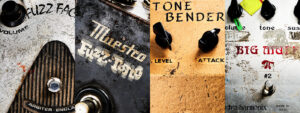
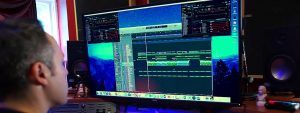

Leave a Reply
You must be logged in to post a comment.